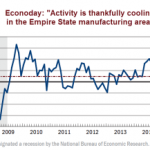This article assumes one is trading the up and down swings in the stock market. Swing traders are just one segment of a market population that includes those sitting in cash (and/or risk ‘off’ vehicles like Treasury Bonds), maintaining longer-term short positions, our always bullish friends, the “stocks for the long-term” contingent and of course, the indomitable Gold Bug “community”, focusing as ever on one asset class while a world full of other assets is in motion.
“Let’s go let’s go, he’s no batter, he’s no batter… (pitch comes to the plate) SWING BATTER!!!”
That was the exact line we were coached to use in little league. Picture it, eight kids out there on every pitch taunting the kid at bat with a canned line in high pitched, pre-pubescent voices. Yeh, that was intimidating.
Here in the all grown up world of the stock market we need the same consistency, although the timing of a “Swing” command is much more exacting. With market volatility what it has been, you’d have to get lucky to call (to the day, let alone hour or minute) the exact bottom or top to any bear or bull swing in the markets. Indeed, I have been expecting a short-term bottom for a while now, initiating a long position on SPY last week (and adding to it this week), but only adding more long positions (and covering some shorts) over the last two days.
So what is a market swing? It is a lurch in the bullish or bearish direction within a trend. It is important to know that the bull bounce (swing) we have been managing is within a bear trend now, so bull positions, assuming a bounce manifests, should be considered temporary.
Below we review the S&P 500 from the perspective of daily and weekly time frames.
I was not buying (actually, I did) the breakdown below critical support and indeed noted “SPX has dropped below the critical support area that you, I and everyone else now sees. What a perfect time for a whipsaw and bounce.” in an NFTRH update. A short-term whipsaw is what it appears to have been.
















Leave A Comment